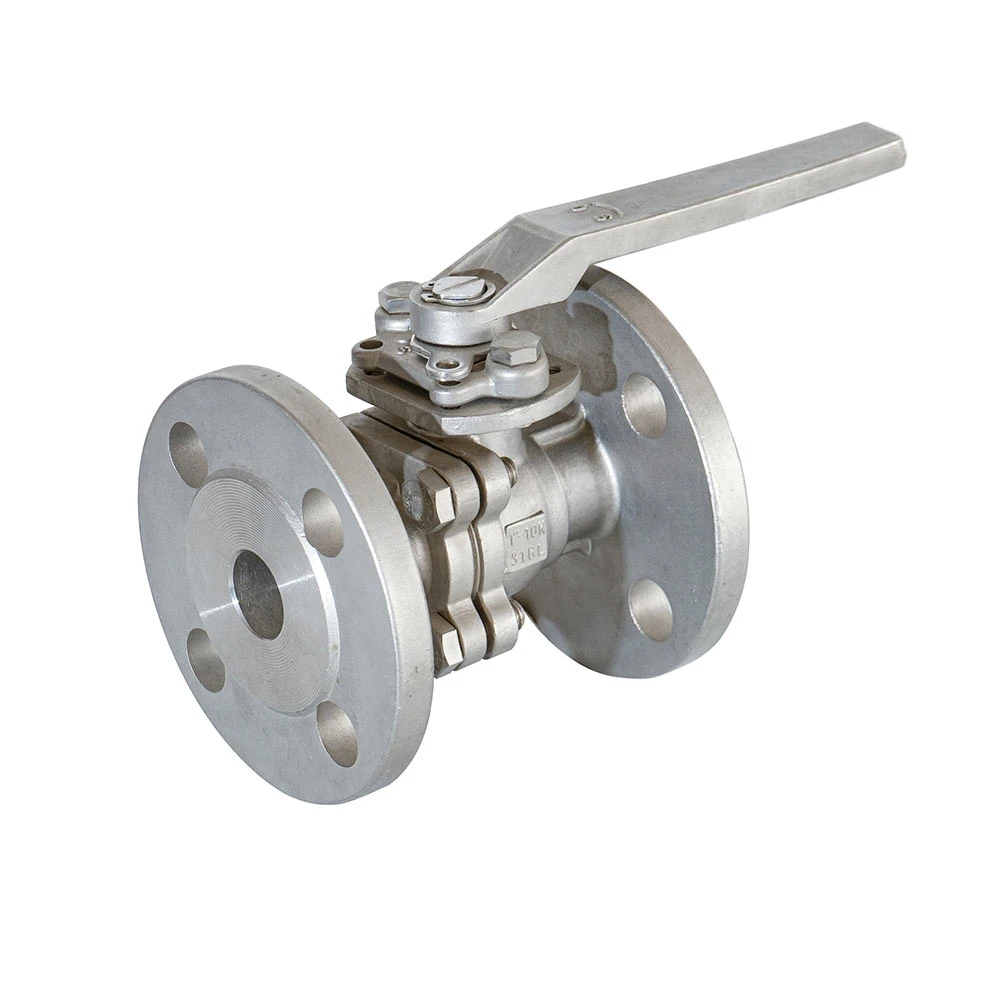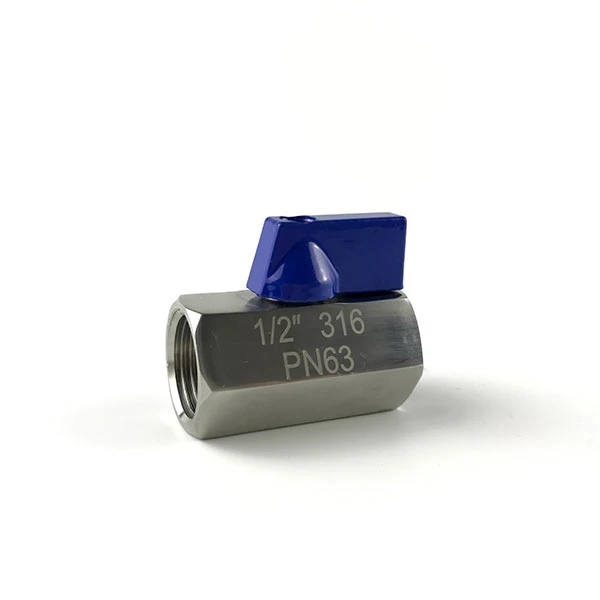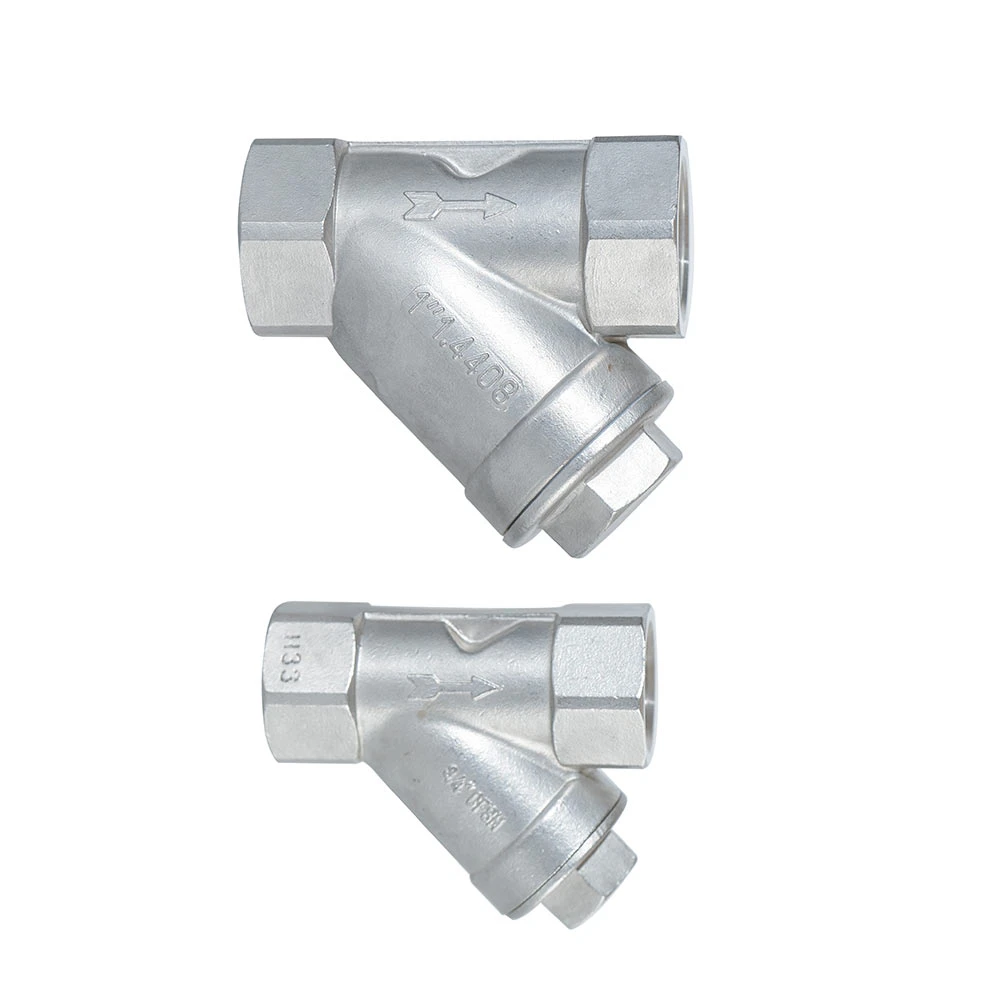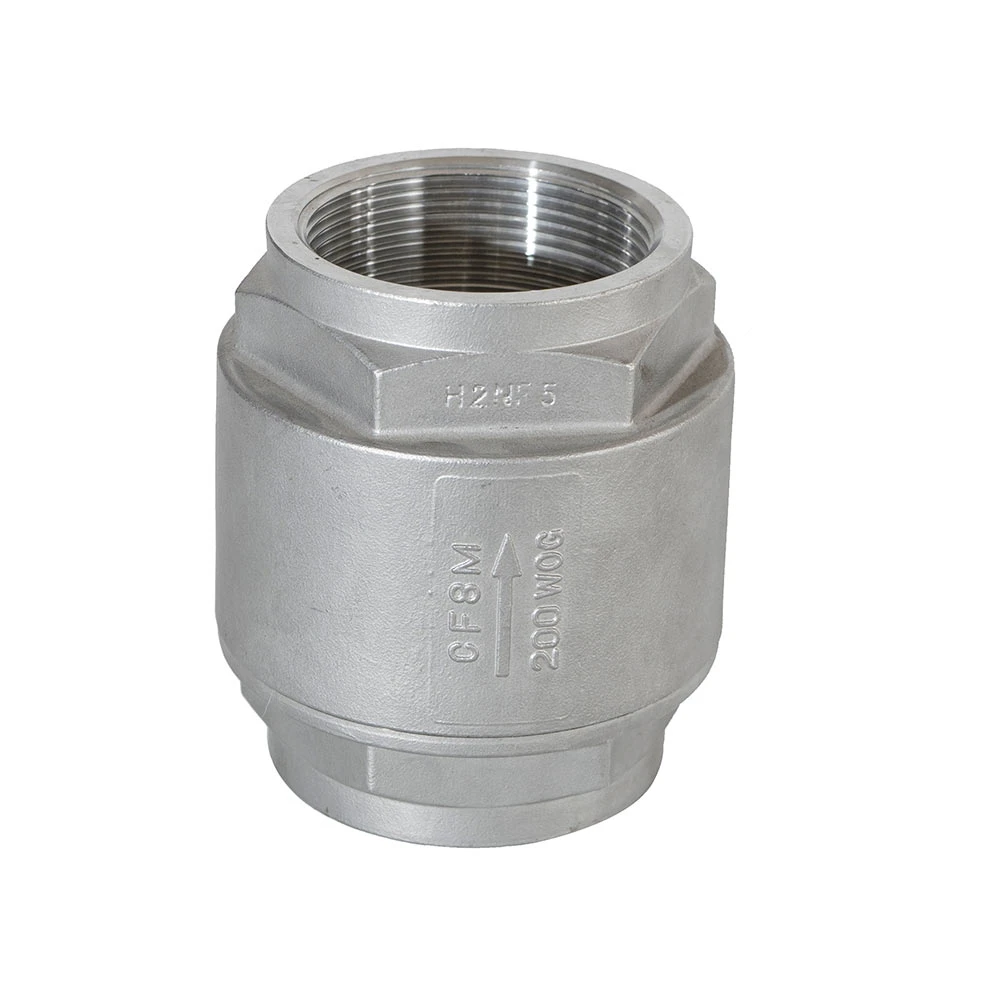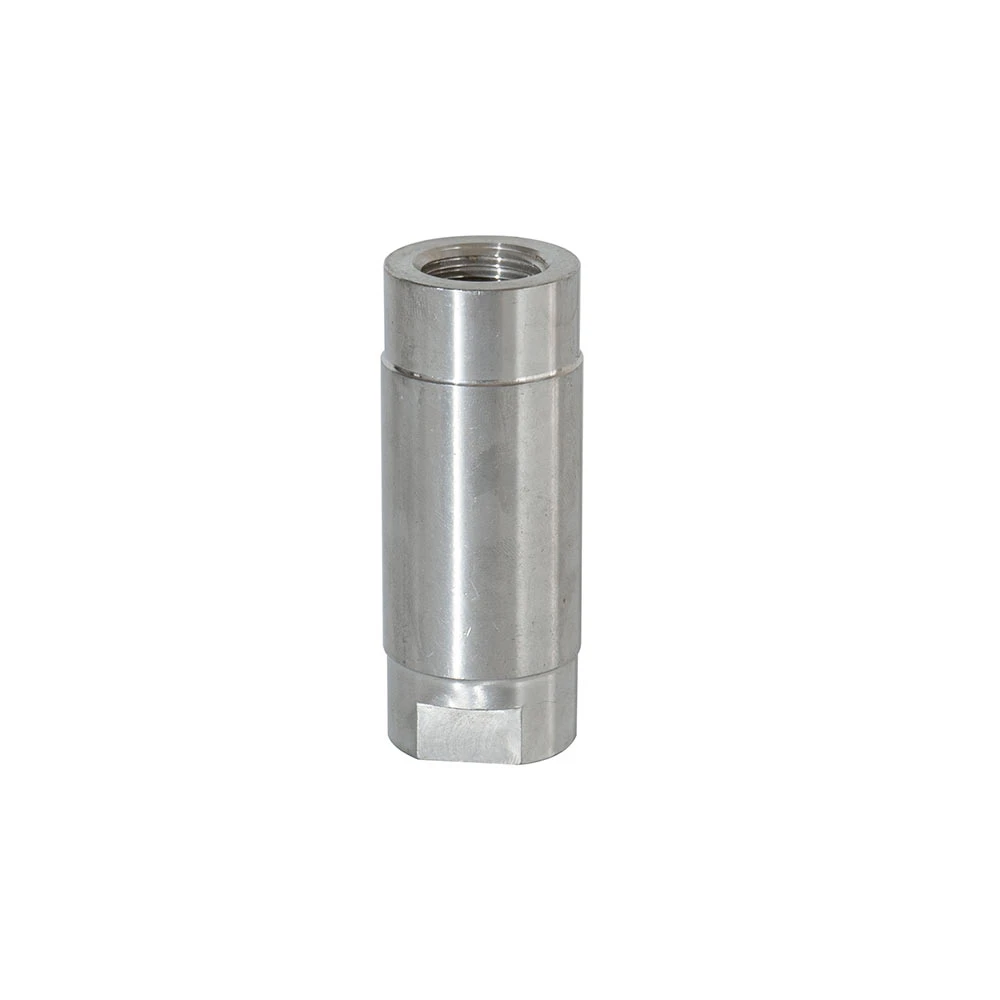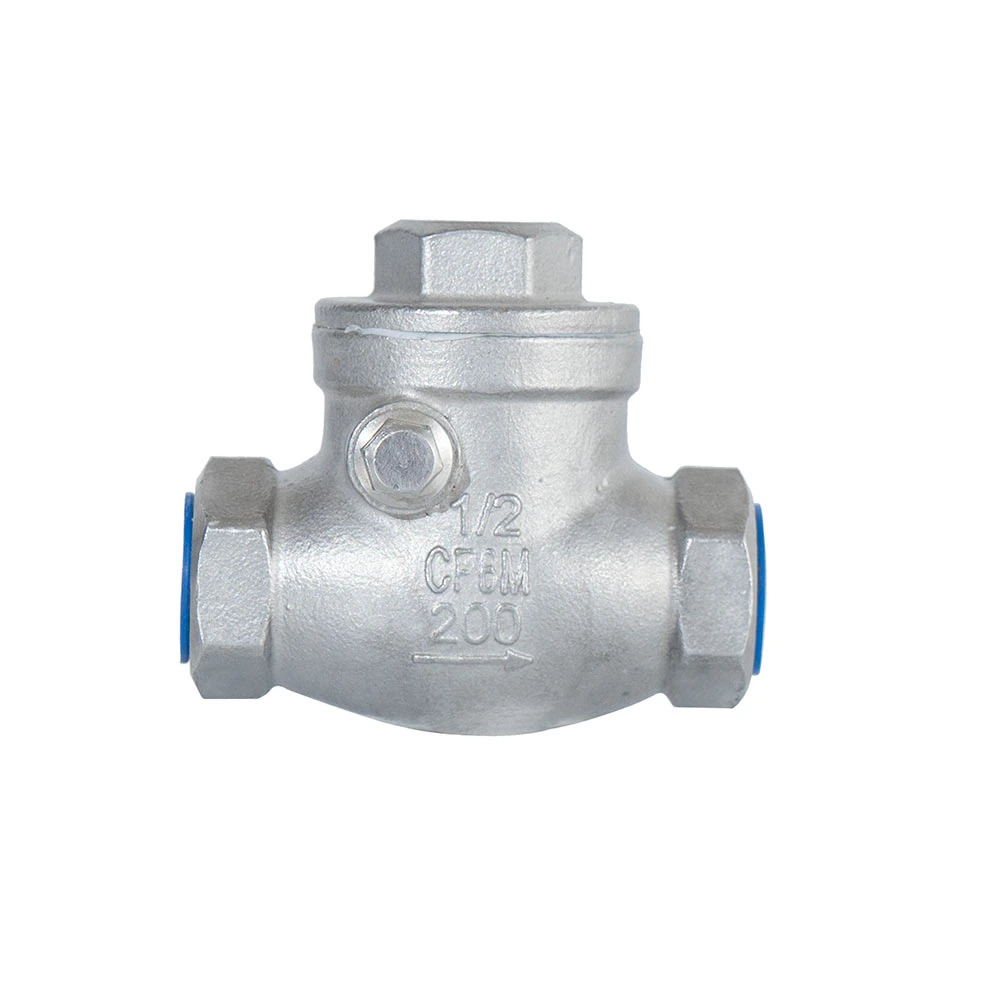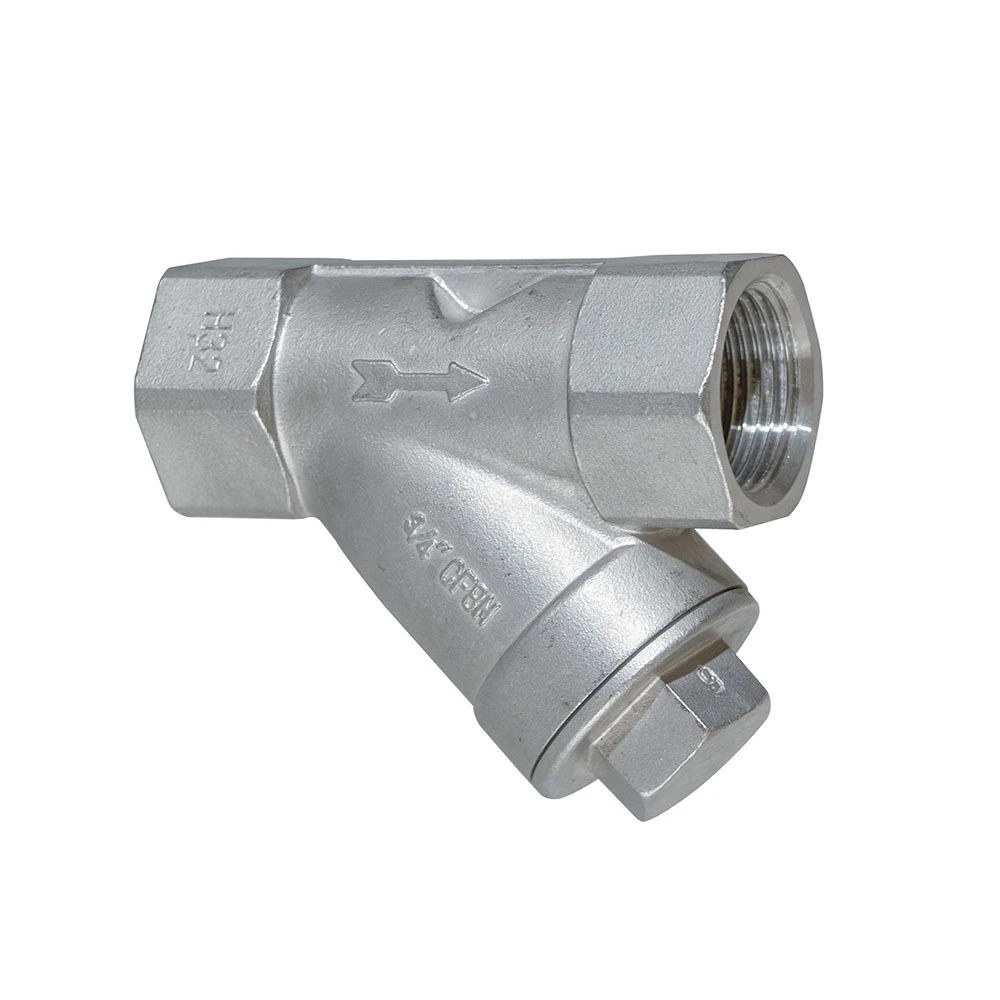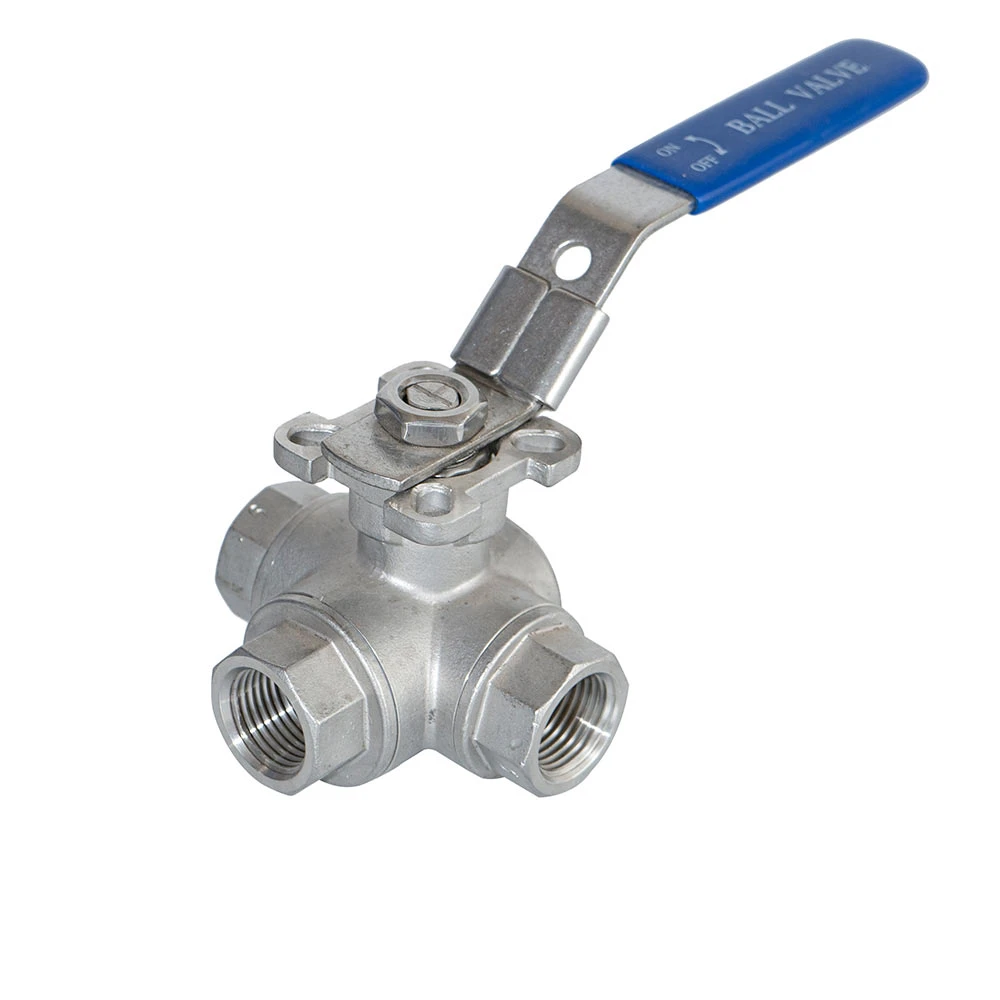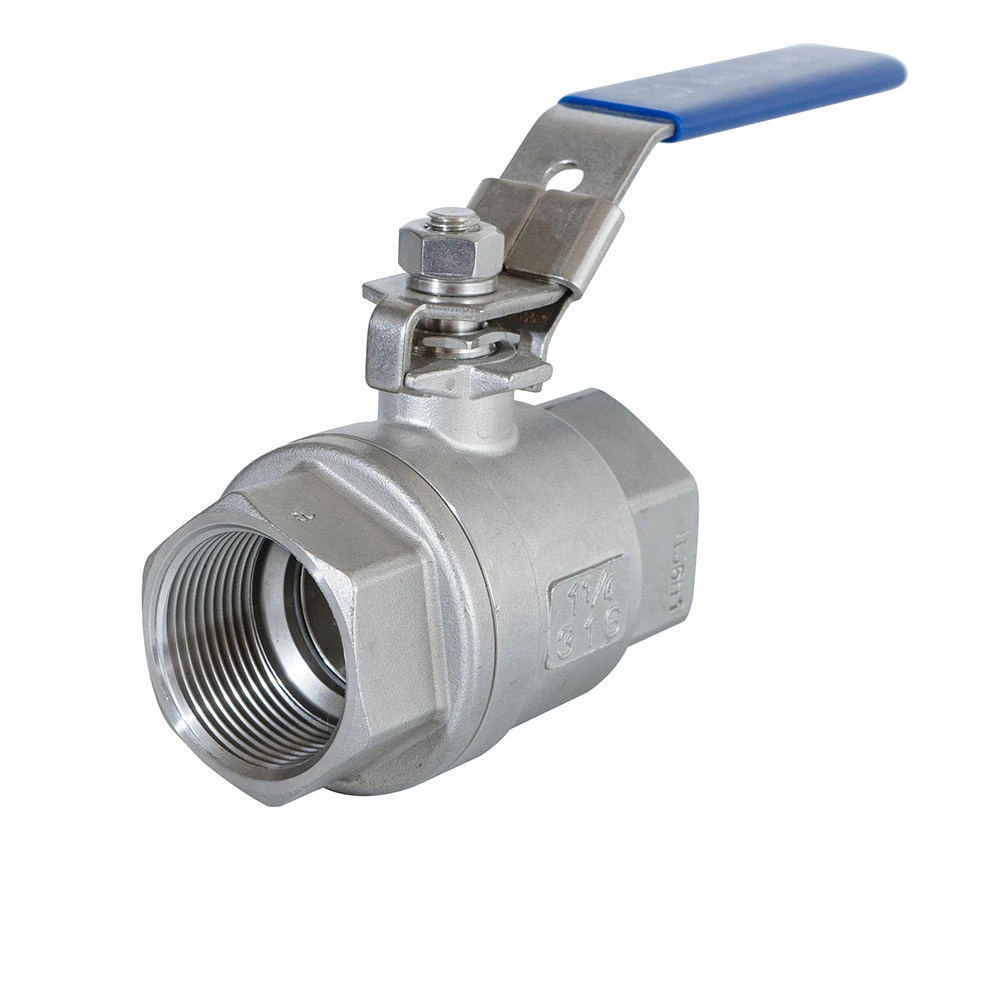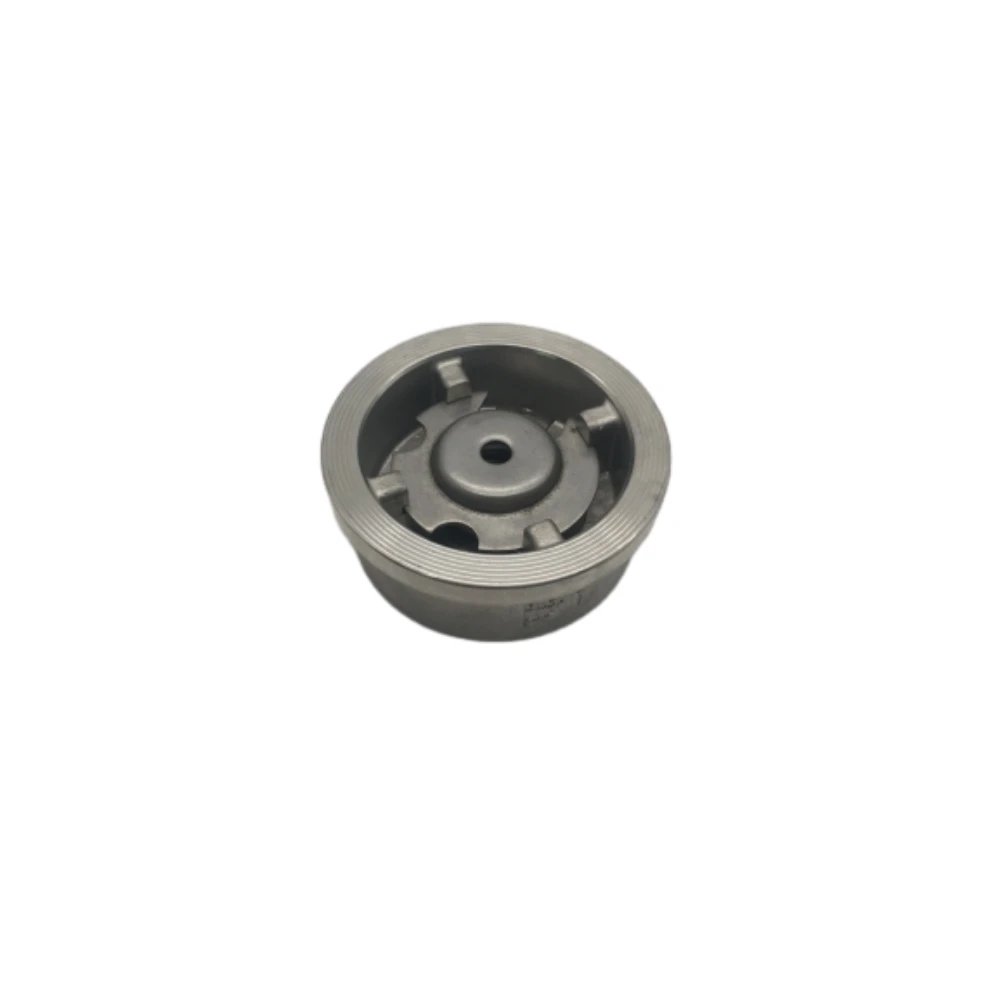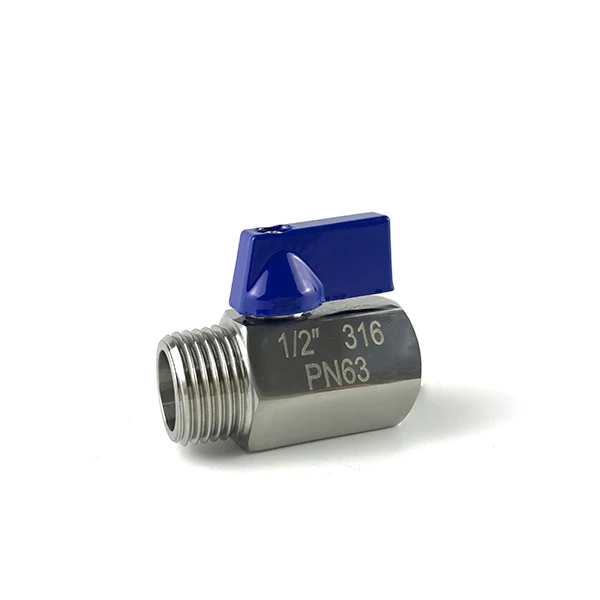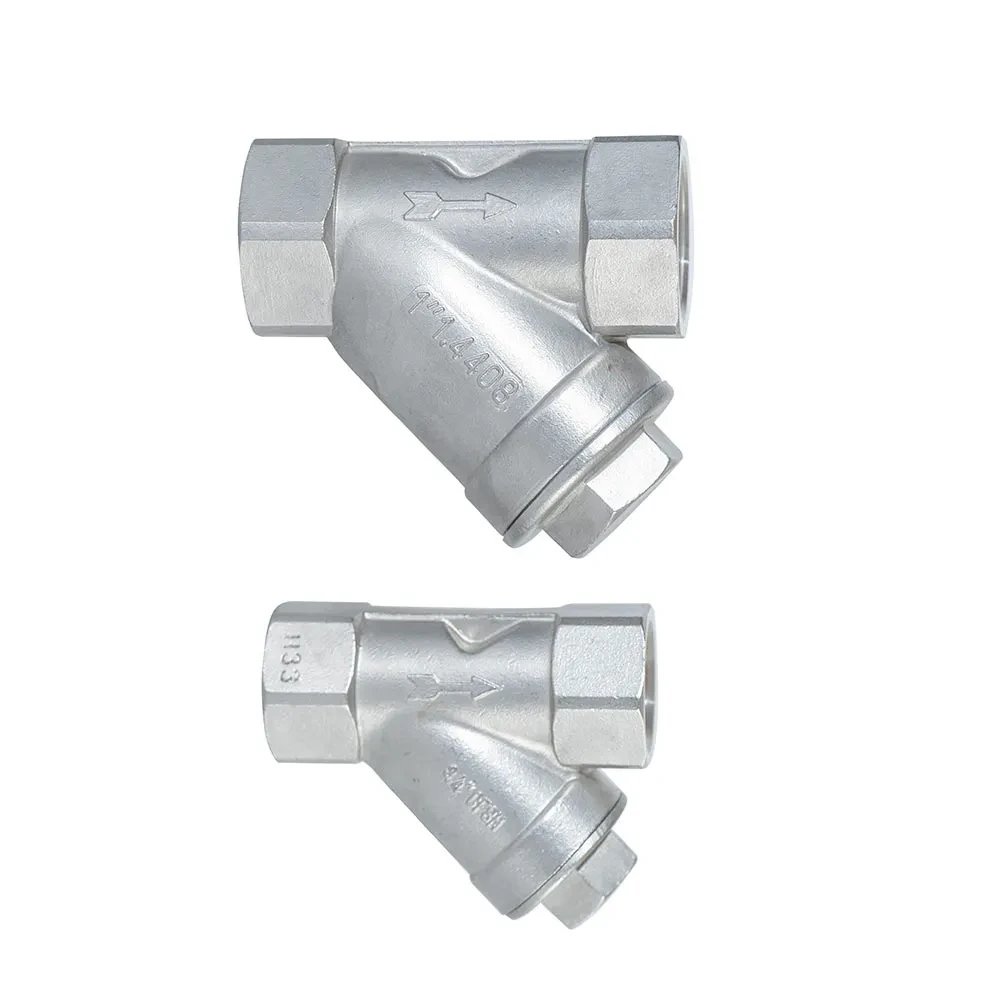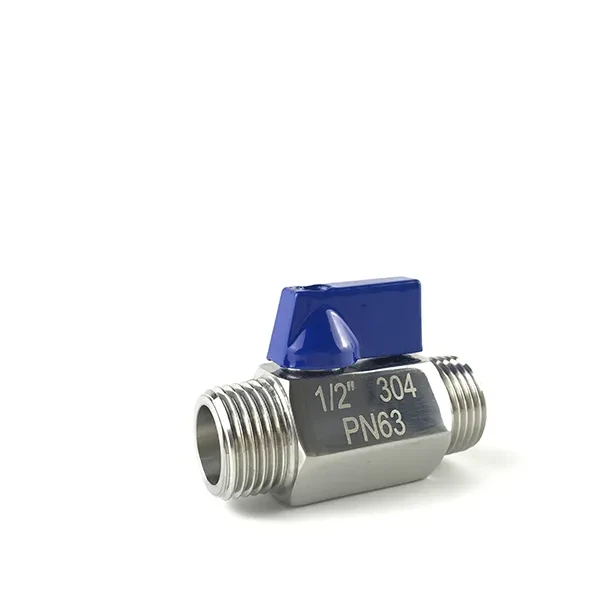The Unifying Strength of the One-Piece Ball Valve in Industrial Applications
In the intricate world of industrial fluid control, the demand for reliable, durable, and leak-proof components is paramount. Among the diverse range of valve solutions, the one piece ball valve stands out as a fundamental yet highly effective choice, particularly for applications requiring robust performance and minimal maintenance. Its inherent design, characterized by a single, integrated body, eliminates potential leak paths often associated with multi-piece constructions, offering superior integrity in demanding environments. This unified structure simplifies installation, reduces potential failure points, and contributes significantly to operational efficiency and safety. As industries increasingly prioritize long-term asset reliability and cost-effectiveness, understanding the specific advantages and versatile applications of these valves becomes crucial for engineers and procurement professionals alike. This article delves into the technical intricacies, manufacturing excellence, and real-world impact of this essential industrial component.
The market for industrial valves is experiencing significant growth, driven by expansion in petrochemical, oil & gas, water treatment, and power generation sectors. Industry reports project the global industrial valve market to reach over $100 billion by 2028, with ball valves maintaining a substantial share due to their quarter-turn operation, compact design, and excellent shut-off capabilities. Within this landscape, the demand for 1 pc ball valve designs is steadily increasing, particularly for applications where compactness, cost-efficiency, and straightforward installation are key considerations. Their robust construction and simplified maintenance procedures make them a preferred choice for a wide array of general-purpose services, cementing their role as an indispensable component in modern industrial infrastructure. This trend underscores a broader industry shift towards solutions that offer both immediate cost benefits and long-term operational resilience.
Understanding the One-Piece Ball Valve: Design & Intrinsic Advantages
The defining characteristic of a ball valve one piece body is its monolithic construction, where the body of the valve is cast or forged as a single unit. Unlike multi-piece designs that require bolting together multiple sections, this singular structure inherently minimizes potential leak paths, making it exceptionally reliable for high-pressure or corrosive applications. This design significantly reduces the chances of fugitive emissions, a critical concern in industries dealing with hazardous fluids. Furthermore, the absence of bolted joints simplifies the manufacturing process, reduces material waste, and often results in a more compact and lightweight valve, which is beneficial for installation in confined spaces. The streamlined internal bore also provides excellent flow characteristics, minimizing pressure drop across the valve.
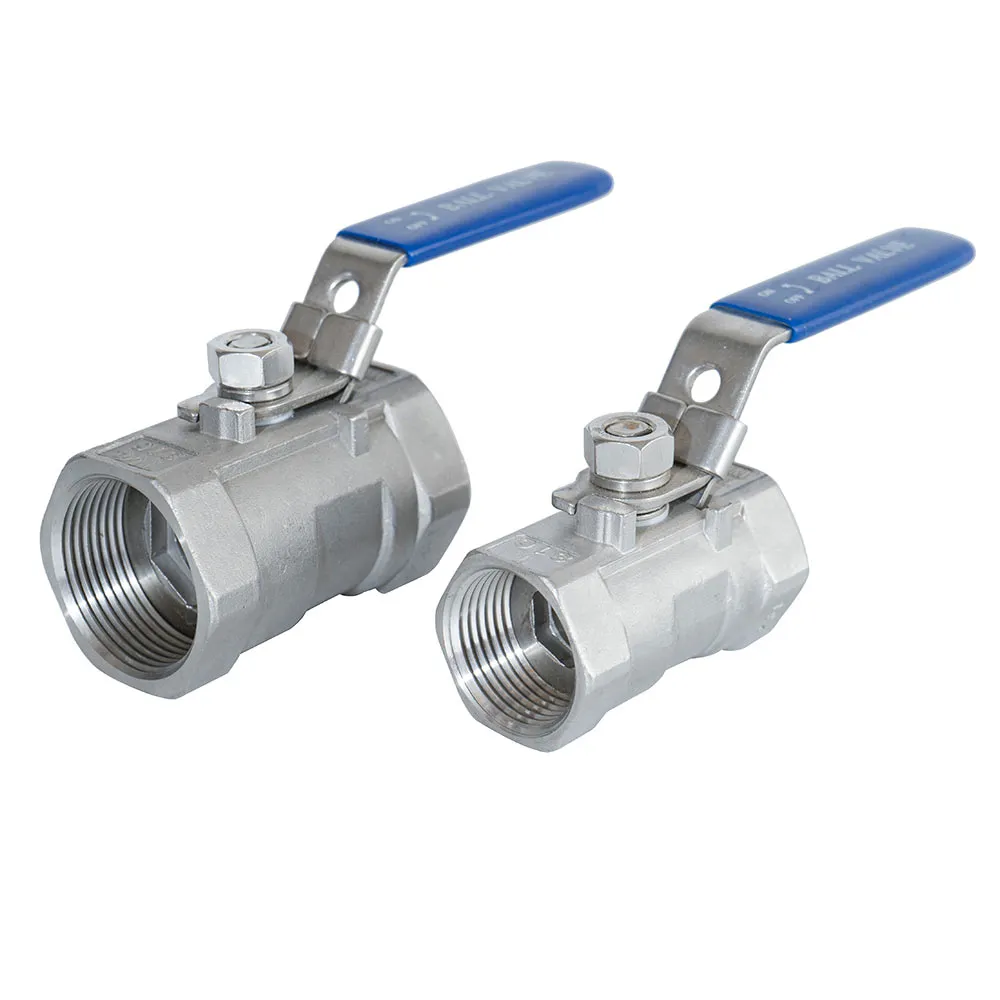
Beyond its robust structural integrity, the one piece ball valve offers several operational advantages. Its quarter-turn operation ensures quick and efficient shut-off, making it ideal for applications requiring rapid response. The design's simplicity also contributes to lower manufacturing costs, translating into a more economical solution for general utility services. While often associated with smaller bore sizes and lower pressure classes compared to some segmented designs, their reliability in their specified range is unparalleled. The tight shut-off provided by the floating ball mechanism ensures minimal leakage across the seat, which is critical for process control and preventing media waste. This combination of structural integrity, operational efficiency, and cost-effectiveness makes it a cornerstone in various industrial fluid management systems.
Manufacturing Excellence: Crafting the One-Piece Ball Valve
The production of a high-quality one piece ball valve involves a precise sequence of engineering and manufacturing processes, ensuring the final product meets stringent performance and safety standards. The journey typically begins with material selection, which is critical for determining the valve's compatibility with various media and operating conditions. Common materials include stainless steel (304, 316, 316L for corrosion resistance), carbon steel (A105, WCB for general utility), and specialized alloys like Duplex or Super Duplex for highly aggressive environments. The choice of material directly impacts the valve's mechanical strength, temperature resistance, and corrosion properties. For instance, stainless steel valves are extensively used in chemical processing and food & beverage industries due to their hygienic properties and resistance to oxidation.

The core manufacturing processes for the 1 pc ball valve body involve either casting or forging. Casting, a cost-effective method, allows for complex shapes and is suitable for high-volume production, while forging offers superior mechanical properties, including higher tensile strength and fatigue resistance, by eliminating porosity and refining grain structure. Following the initial forming, advanced CNC (Computer Numerical Control) machining is employed to achieve precise dimensions for the ball, stem, and body bore, ensuring tight tolerances for optimal sealing and operation. This accuracy is paramount for maintaining the valve's integrity and preventing leakage. Post-machining, the components undergo rigorous surface treatments and polishing to enhance resistance to wear and corrosion, crucial for extending the valve's service life.
Quality control is integrated at every stage, from raw material inspection to final product testing. Key inspection standards include ISO 9001 for quality management systems, API 598 for valve inspection and testing, and ANSI/ASME B16.34 for valve design and pressure ratings. Hydrostatic testing ensures the valve body can withstand specified pressures without leakage, while pneumatic testing verifies the seat's ability to provide a bubble-tight shut-off. Typical service life for a well-maintained ball valve one piece body can range from 10 to 20 years, depending on the application severity, media properties, and operating frequency. This meticulous manufacturing and testing regimen ensures that each valve delivers reliable and consistent performance in the field, minimizing downtime and maximizing operational safety.
Key Technical Specifications and Performance Data
Understanding the technical specifications of a one piece ball valve is crucial for proper selection and integration into fluid systems. Key parameters include nominal size, pressure rating, temperature range, body material, seat material, and connection type. These specifications dictate the valve's suitability for particular applications. For example, a valve rated for PN16 (16 bar nominal pressure) and made of 316 stainless steel with PTFE seats is ideal for moderate pressure, corrosive chemical applications up to 180°C. Below is a general table outlining typical specifications for commonly available one-piece ball valves.
| Parameter | Typical Range/Options | Notes on Relevance |
|---|---|---|
| Nominal Size (DN/NPS) | DN15 - DN100 (NPS 1/2" - 4") | Common for general utility; smaller sizes typical for 1 pc body. |
| Pressure Rating (PN/Class) | PN16, PN25, PN40 (Class 150, Class 300) | Max working pressure; higher classes for forged bodies. |
| Temperature Range | -20°C to +200°C (depending on seat material) | PTFE seats up to 180°C, PEEK/Metal seats for higher temps. |
| Body Material | SS304, SS316, Carbon Steel (WCB, A105) | Corrosion resistance & mechanical strength. |
| Seat Material | PTFE, RTFE, PEEK, Metal | Sealing effectiveness, temperature limits, abrasion resistance. |
| End Connections | Threaded (NPT, BSP, RC) | Ease of installation and pipe compatibility. |
| Operation | Lever, Actuator (Pneumatic/Electric) | Manual control or automated process integration. |
These parameters are critical for specifying the correct one piece ball valve for a given application, ensuring it performs reliably under design conditions. For instance, in a water treatment plant, a stainless steel 1 pc ball valve with a PTFE seat might be selected for its corrosion resistance and tight shut-off, while in a compressed air system, a brass or carbon steel valve with similar seat material might suffice, given its less aggressive media. The simple, robust design of the ball valve one piece body makes it highly adaptable across a wide spectrum of industrial fluid control requirements.
Diverse Applications Across Industries
The versatility and reliability of the one piece ball valve make it indispensable across a multitude of industries. Its robust design is particularly advantageous in sectors where leak prevention and long-term operational stability are critical. In the Petrochemical Industry, for example, these valves are widely used for general utility lines carrying water, air, and non-corrosive chemicals, where their compact design and reliable shut-off contribute to enhanced safety and process efficiency. Their resistance to various media, depending on the material of construction, makes them suitable for critical ancillary services within refineries and chemical plants.
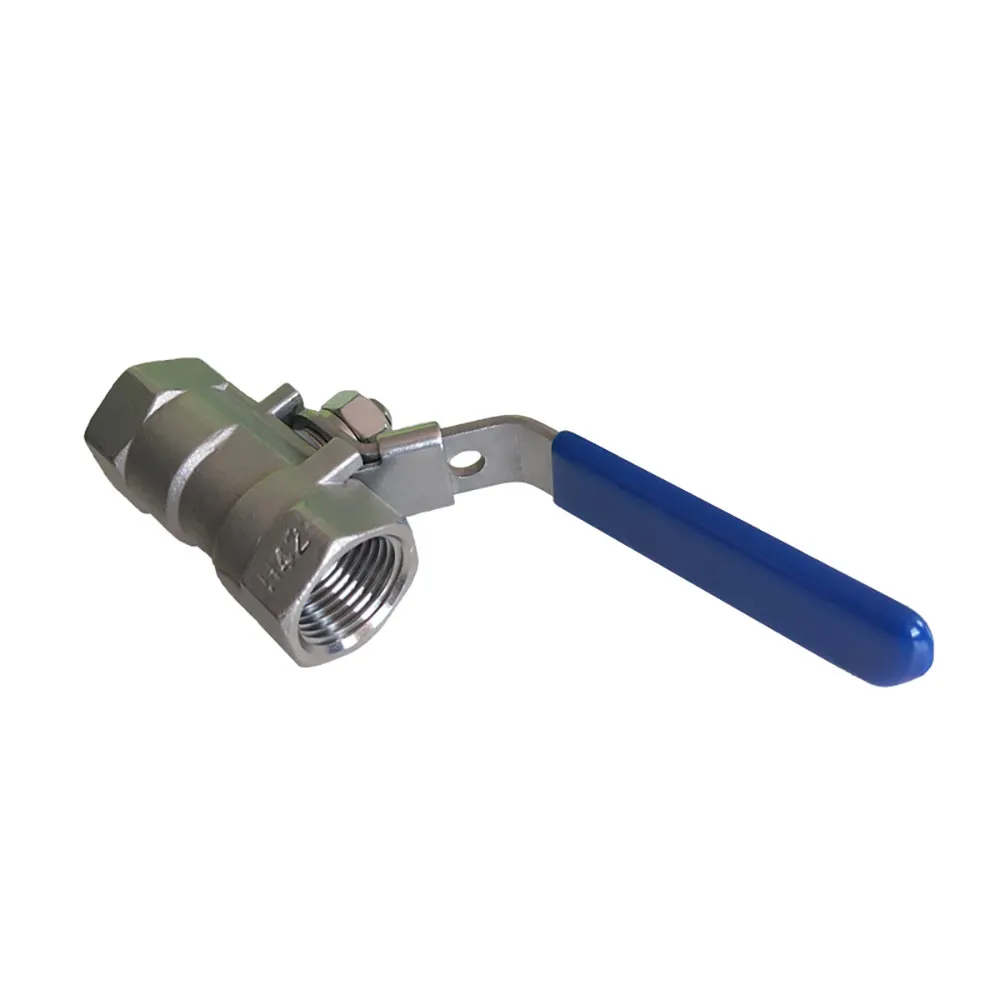
In Water Treatment and Supply Systems, 1 pc ball valve units are employed in various stages, from raw water intake to treated water distribution. Their ability to provide tight shut-off prevents water loss and ensures precise control of flow, which is essential for optimizing filtration, disinfection, and distribution networks. In HVAC (Heating, Ventilation, and Air Conditioning) Systems, they are commonly found in chilled water lines, hot water lines, and condenser water lines, where their quick quarter-turn operation and reliable sealing contribute to energy efficiency by preventing unwanted flow and maintaining system pressure. The simplistic design allows for quick integration and reduces the complexity of maintenance.
Furthermore, the Mining and Metallurgy Industries utilize ball valve one piece body solutions in less abrasive applications, such as water lines for dust suppression or chemical reagent dosing lines where highly specific material compatibility is not required but reliability is paramount. Their suitability for diverse media and environments underscores their fundamental role in maintaining seamless industrial operations, contributing to both process safety and overall system longevity. The low maintenance requirements and long service life of these valves translate directly into reduced operational costs and improved uptime across these varied industrial landscapes.
Choosing Your Partner: Manufacturer Comparison and Custom Solutions
Selecting the right manufacturer for one piece ball valve solutions is critical for ensuring product quality, consistent supply, and reliable after-sales support. While many suppliers offer standard products, leading manufacturers distinguish themselves through their commitment to quality, adherence to international standards, and capacity for customization. Factors to consider include manufacturing capabilities (e.g., in-house forging, advanced CNC machining), quality certifications (ISO 9001, API, CE), material traceability, and testing protocols. A reliable supplier should offer detailed documentation, including material test reports (MTRs) and performance curves.

Many industrial applications require valves that deviate from standard specifications due to unique process conditions. Reputable manufacturers often provide custom solutions for 1 pc ball valve requirements. This can include specialized materials for extreme temperatures or highly corrosive media, modified end connections for specific piping systems, or unique actuation options (e.g., specific pneumatic or electric actuators for automated systems). Collaborating with a manufacturer capable of delivering engineered solutions ensures that the valve perfectly integrates into existing infrastructure and performs optimally under demanding conditions, preventing costly retrofits or operational inefficiencies.
Below is a comparative overview highlighting typical differentiating factors among manufacturers of ball valve one piece body products:
| Feature | Manufacturer A (Premium) | Manufacturer B (Mid-Range) | Manufacturer C (Standard) |
|---|---|---|---|
| Quality Certifications | ISO 9001, API 607 (Fire Safe), CE, PED, TA-Luft | ISO 9001, CE | ISO 9001 |
| Material Traceability | Full 3.1 Certification, NACE MR0175 compliance | Basic MTRs available | Limited documentation |
| Customization Capability | Extensive (materials, connections, actuation, coating) | Moderate (material and connection changes) | Minimal (standard catalogue only) |
| Lead Time (Standard) | 4-6 weeks | 2-4 weeks | 1-2 weeks |
| Warranty Period | 24-36 months | 12-18 months | 6-12 months |
| Technical Support | Dedicated engineers, on-site support | Email/Phone support | Basic troubleshooting |
This comparison highlights that while a lower price point might be attractive, the long-term cost of ownership, including reliability, safety, and potential downtime, often favors manufacturers offering higher levels of quality assurance, technical support, and customization. For critical applications, investing in a premium one piece ball valve from a reputable supplier is a strategic decision that pays dividends in operational continuity and safety.
Ensuring Reliability: Quality Assurance and Support
For B2B buyers, the decision to purchase a one piece ball valve extends beyond immediate cost to encompass long-term reliability and support. Leading manufacturers adhere to rigorous quality assurance protocols, ensuring every valve meets or exceeds international standards. This commitment is often evidenced by certifications such as ISO 9001 for quality management, API 607 for fire-safe design, and CE marking for European market compliance. These certifications are not merely badges but represent a systemic approach to quality, from raw material sourcing and manufacturing processes to final inspection and documentation. For example, a valve with API 607 certification has been specifically tested to maintain its structural integrity and minimize external leakage when exposed to high temperatures during a fire, critical for safety in petrochemical facilities.
A key aspect of trustworthiness for 1 pc ball valve suppliers lies in their transparency regarding delivery cycles and warranty commitments. Reputable companies typically provide clear delivery timelines, factoring in manufacturing, testing, and logistics, with standard lead times often ranging from 2-6 weeks depending on product complexity and order volume. Furthermore, a comprehensive warranty, typically ranging from 12 to 24 months, offers peace of mind, covering defects in material or workmanship. Beyond the sale, robust customer support—including technical assistance, spare parts availability, and troubleshooting guides—is paramount. This ensures that any operational issues can be swiftly addressed, minimizing downtime and protecting the client's investment. A company with a long service history and strong client testimonials further reinforces its reliability and dedication to customer success.
Frequently Asked Questions (FAQ) About One-Piece Ball Valves
-
Q1: What are the primary advantages of a one piece ball valve over multi-piece designs?
A1: The main advantage of a ball valve one piece body is its inherent structural integrity, which significantly reduces the number of potential leak paths. Unlike 2-piece or 3-piece designs that have bolted connections, the single-body construction minimizes the risk of fugitive emissions and enhances reliability, especially in applications with critical media or high pressures. This design also often results in a more compact and cost-effective valve for general utility services.
-
Q2: In which industries are 1 pc ball valve types most commonly used?
A2: One piece ball valve solutions are widely employed across diverse industries including petrochemical (for utility lines), water treatment and supply, HVAC, general manufacturing, and compressed air systems. Their robust construction, tight shut-off, and low maintenance requirements make them suitable for a broad range of general-purpose fluid control applications where simplicity and reliability are key.
-
Q3: What materials are typically used for one piece ball valve bodies and seats?
A3: Common body materials include stainless steel (e.g., SS304, SS316) for corrosion resistance, carbon steel (e.g., WCB, A105) for general utility, and brass for specific applications. For seats, PTFE (Polytetrafluoroethylene) is most common due to its excellent chemical resistance and low friction, while RTFE (Reinforced PTFE) offers enhanced durability. For higher temperatures or more abrasive media, PEEK or metal seats can be used.
-
Q4: Are one piece ball valve units suitable for high-pressure or high-temperature applications?
A4: While typically used for lower to moderate pressure and temperature applications compared to more complex valve designs, specific one piece ball valve variants can handle higher pressures and temperatures. This depends heavily on the body material (forged steel often handles higher pressures), seat material (PEEK or metal seats for high temperatures), and pressure class ratings. Always consult the manufacturer's specifications for suitability in extreme conditions.
Conclusion
The one piece ball valve remains a cornerstone in industrial fluid control, embodying simplicity, reliability, and cost-effectiveness. Its unique monolithic body design offers inherent advantages in terms of leak prevention and structural integrity, making it a preferred choice for a wide array of general-purpose applications across petrochemical, water treatment, HVAC, and manufacturing sectors. By understanding the meticulous manufacturing processes, technical specifications, and application benefits, B2B decision-makers can confidently select and implement these valves to enhance operational efficiency, ensure safety, and minimize maintenance overhead. Partnering with a reputable manufacturer that prioritizes quality, offers customization, and provides comprehensive support is paramount to leveraging the full potential of these essential industrial components.
References
- Valve Manufacturers Association of America. (2023). "Industrial Valve Market Outlook 2023-2028." VMA Journal of Fluid Control.
- ISO (International Organization for Standardization). (2022). "ISO 9001:2015 Quality Management Systems - Requirements." ISO Standards Publication.
- American Petroleum Institute. (2021). "API Standard 607: Fire Test for Quarter-Turn Valves." API Recommended Practices.
- ASME (American Society of Mechanical Engineers). (2020). "ASME B16.34: Valves—Flanged, Threaded, and Welding End." ASME Boiler and Pressure Vessel Code.
The Unifying Strength of the One-Piece Ball Valve in Industrial Applications
In the intricate world of industrial fluid control, the demand for reliable, durable, and leak-proof components is paramount. Among the diverse range of valve solutions, the one piece ball valve stands out as a fundamental yet highly effective choice, particularly for applications requiring robust performance and minimal maintenance. Its inherent design, characterized by a single, integrated body, eliminates potential leak paths often associated with multi-piece constructions, offering superior integrity in demanding environments. This unified structure simplifies installation, reduces potential failure points, and contributes significantly to operational efficiency and safety. As industries increasingly prioritize long-term asset reliability and cost-effectiveness, understanding the specific advantages and versatile applications of these valves becomes crucial for engineers and procurement professionals alike. This article delves into the technical intricacies, manufacturing excellence, and real-world impact of this essential industrial component.
The market for industrial valves is experiencing significant growth, driven by expansion in petrochemical, oil & gas, water treatment, and power generation sectors. Industry reports project the global industrial valve market to reach over $100 billion by 2028, with ball valves maintaining a substantial share due to their quarter-turn operation, compact design, and excellent shut-off capabilities. Within this landscape, the demand for 1 pc ball valve designs is steadily increasing, particularly for applications where compactness, cost-efficiency, and straightforward installation are key considerations. Their robust construction and simplified maintenance procedures make them a preferred choice for a wide array of general-purpose services, cementing their role as an indispensable component in modern industrial infrastructure. This trend underscores a broader industry shift towards solutions that offer both immediate cost benefits and long-term operational resilience.
Understanding the One-Piece Ball Valve: Design & Intrinsic Advantages
The defining characteristic of a ball valve one piece body is its monolithic construction, where the body of the valve is cast or forged as a single unit. Unlike multi-piece designs that require bolting together multiple sections, this singular structure inherently minimizes potential leak paths, making it exceptionally reliable for high-pressure or corrosive applications. This design significantly reduces the chances of fugitive emissions, a critical concern in industries dealing with hazardous fluids. Furthermore, the absence of bolted joints simplifies the manufacturing process, reduces material waste, and often results in a more compact and lightweight valve, which is beneficial for installation in confined spaces. The streamlined internal bore also provides excellent flow characteristics, minimizing pressure drop across the valve.

Beyond its robust structural integrity, the one piece ball valve offers several operational advantages. Its quarter-turn operation ensures quick and efficient shut-off, making it ideal for applications requiring rapid response. The design's simplicity also contributes to lower manufacturing costs, translating into a more economical solution for general utility services. While often associated with smaller bore sizes and lower pressure classes compared to some segmented designs, their reliability in their specified range is unparalleled. The tight shut-off provided by the floating ball mechanism ensures minimal leakage across the seat, which is critical for process control and preventing media waste. This combination of structural integrity, operational efficiency, and cost-effectiveness makes it a cornerstone in various industrial fluid management systems.
Manufacturing Excellence: Crafting the One-Piece Ball Valve
The production of a high-quality one piece ball valve involves a precise sequence of engineering and manufacturing processes, ensuring the final product meets stringent performance and safety standards. The journey typically begins with material selection, which is critical for determining the valve's compatibility with various media and operating conditions. Common materials include stainless steel (304, 316, 316L for corrosion resistance), carbon steel (A105, WCB for general utility), and specialized alloys like Duplex or Super Duplex for highly aggressive environments. The choice of material directly impacts the valve's mechanical strength, temperature resistance, and corrosion properties. For instance, stainless steel valves are extensively used in chemical processing and food & beverage industries due to their hygienic properties and resistance to oxidation.

The core manufacturing processes for the 1 pc ball valve body involve either casting or forging. Casting, a cost-effective method, allows for complex shapes and is suitable for high-volume production, while forging offers superior mechanical properties, including higher tensile strength and fatigue resistance, by eliminating porosity and refining grain structure. Following the initial forming, advanced CNC (Computer Numerical Control) machining is employed to achieve precise dimensions for the ball, stem, and body bore, ensuring tight tolerances for optimal sealing and operation. This accuracy is paramount for maintaining the valve's integrity and preventing leakage. Post-machining, the components undergo rigorous surface treatments and polishing to enhance resistance to wear and corrosion, crucial for extending the valve's service life.
Quality control is integrated at every stage, from raw material inspection to final product testing. Key inspection standards include ISO 9001 for quality management systems, API 598 for valve inspection and testing, and ANSI/ASME B16.34 for valve design and pressure ratings. Hydrostatic testing ensures the valve body can withstand specified pressures without leakage, while pneumatic testing verifies the seat's ability to provide a bubble-tight shut-off. Typical service life for a well-maintained ball valve one piece body can range from 10 to 20 years, depending on the application severity, media properties, and operating frequency. This meticulous manufacturing and testing regimen ensures that each valve delivers reliable and consistent performance in the field, minimizing downtime and maximizing operational safety.
Key Technical Specifications and Performance Data
Understanding the technical specifications of a one piece ball valve is crucial for proper selection and integration into fluid systems. Key parameters include nominal size, pressure rating, temperature range, body material, seat material, and connection type. These specifications dictate the valve's suitability for particular applications. For instance, a valve rated for PN16 (16 bar nominal pressure) and made of 316 stainless steel with PTFE seats is ideal for moderate pressure, corrosive chemical applications up to 180°C. Below is a general table outlining typical specifications for commonly available one-piece ball valves.
| Parameter | Typical Range/Options | Notes on Relevance |
|---|---|---|
| Nominal Size (DN/NPS) | DN15 - DN100 (NPS 1/2" - 4") | Common for general utility; smaller sizes typical for 1 pc body. |
| Pressure Rating (PN/Class) | PN16, PN25, PN40 (Class 150, Class 300) | Max working pressure; higher classes for forged bodies. |
| Temperature Range | -20°C to +200°C (depending on seat material) | PTFE seats up to 180°C, PEEK/Metal seats for higher temps. |
| Body Material | SS304, SS316, Carbon Steel (WCB, A105) | Corrosion resistance & mechanical strength. |
| Seat Material | PTFE, RTFE, PEEK, Metal | Sealing effectiveness, temperature limits, abrasion resistance. |
| End Connections | Threaded (NPT, BSP, RC) | Ease of installation and pipe compatibility. |
| Operation | Lever, Actuator (Pneumatic/Electric) | Manual control or automated process integration. |
These parameters are critical for specifying the correct one piece ball valve for a given application, ensuring it performs reliably under design conditions. For instance, in a water treatment plant, a stainless steel 1 pc ball valve with a PTFE seat might be selected for its corrosion resistance and tight shut-off, while in a compressed air system, a brass or carbon steel valve with similar seat material might suffice, given its less aggressive media. The simple, robust design of the ball valve one piece body makes it highly adaptable across a wide spectrum of industrial fluid control requirements.
Diverse Applications Across Industries
The versatility and reliability of the one piece ball valve make it indispensable across a multitude of industries. Its robust design is particularly advantageous in sectors where leak prevention and long-term operational stability are critical. In the Petrochemical Industry, for example, these valves are widely used for general utility lines carrying water, air, and non-corrosive chemicals, where their compact design and reliable shut-off contribute to enhanced safety and process efficiency. Their resistance to various media, depending on the material of construction, makes them suitable for critical ancillary services within refineries and chemical plants.

In Water Treatment and Supply Systems, 1 pc ball valve units are employed in various stages, from raw water intake to treated water distribution. Their ability to provide tight shut-off prevents water loss and ensures precise control of flow, which is essential for optimizing filtration, disinfection, and distribution networks. In HVAC (Heating, Ventilation, and Air Conditioning) Systems, they are commonly found in chilled water lines, hot water lines, and condenser water lines, where their quick quarter-turn operation and reliable sealing contribute to energy efficiency by preventing unwanted flow and maintaining system pressure. The simplistic design allows for quick integration and reduces the complexity of maintenance.
Furthermore, the Mining and Metallurgy Industries utilize ball valve one piece body solutions in less abrasive applications, such as water lines for dust suppression or chemical reagent dosing lines where highly specific material compatibility is not required but reliability is paramount. Their suitability for diverse media and environments underscores their fundamental role in maintaining seamless industrial operations, contributing to both process safety and overall system longevity. The low maintenance requirements and long service life of these valves translate directly into reduced operational costs and improved uptime across these varied industrial landscapes.
Choosing Your Partner: Manufacturer Comparison and Custom Solutions
Selecting the right manufacturer for one piece ball valve solutions is critical for ensuring product quality, consistent supply, and reliable after-sales support. While many suppliers offer standard products, leading manufacturers distinguish themselves through their commitment to quality, adherence to international standards, and capacity for customization. Factors to consider include manufacturing capabilities (e.g., in-house forging, advanced CNC machining), quality certifications (ISO 9001, API, CE), material traceability, and testing protocols. A reliable supplier should offer detailed documentation, including material test reports (MTRs) and performance curves.

Many industrial applications require valves that deviate from standard specifications due to unique process conditions. Reputable manufacturers often provide custom solutions for 1 pc ball valve requirements. This can include specialized materials for extreme temperatures or highly corrosive media, modified end connections for specific piping systems, or unique actuation options (e.g., specific pneumatic or electric actuators for automated systems). Collaborating with a manufacturer capable of delivering engineered solutions ensures that the valve perfectly integrates into existing infrastructure and performs optimally under demanding conditions, preventing costly retrofits or operational inefficiencies.
Below is a comparative overview highlighting typical differentiating factors among manufacturers of ball valve one piece body products:
| Feature | Manufacturer A (Premium) | Manufacturer B (Mid-Range) | Manufacturer C (Standard) |
|---|---|---|---|
| Quality Certifications | ISO 9001, API 607 (Fire Safe), CE, PED, TA-Luft | ISO 9001, CE | ISO 9001 |
| Material Traceability | Full 3.1 Certification, NACE MR0175 compliance | Basic MTRs available | Limited documentation |
| Customization Capability | Extensive (materials, connections, actuation, coating) | Moderate (material and connection changes) | Minimal (standard catalogue only) |
| Lead Time (Standard) | 4-6 weeks | 2-4 weeks | 1-2 weeks |
| Warranty Period | 24-36 months | 12-18 months | 6-12 months |
| Technical Support | Dedicated engineers, on-site support | Email/Phone support | Basic troubleshooting |
This comparison highlights that while a lower price point might be attractive, the long-term cost of ownership, including reliability, safety, and potential downtime, often favors manufacturers offering higher levels of quality assurance, technical support, and customization. For critical applications, investing in a premium one piece ball valve from a reputable supplier is a strategic decision that pays dividends in operational continuity and safety.
Ensuring Reliability: Quality Assurance and Support
For B2B buyers, the decision to purchase a one piece ball valve extends beyond immediate cost to encompass long-term reliability and support. Leading manufacturers adhere to rigorous quality assurance protocols, ensuring every valve meets or exceeds international standards. This commitment is often evidenced by certifications such as ISO 9001 for quality management, API 607 for fire-safe design, and CE marking for European market compliance. These certifications are not merely badges but represent a systemic approach to quality, from raw material sourcing and manufacturing processes to final inspection and documentation. For example, a valve with API 607 certification has been specifically tested to maintain its structural integrity and minimize external leakage when exposed to high temperatures during a fire, critical for safety in petrochemical facilities.
A key aspect of trustworthiness for 1 pc ball valve suppliers lies in their transparency regarding delivery cycles and warranty commitments. Reputable companies typically provide clear delivery timelines, factoring in manufacturing, testing, and logistics, with standard lead times often ranging from 2-6 weeks depending on product complexity and order volume. Furthermore, a comprehensive warranty, typically ranging from 12 to 24 months, offers peace of mind, covering defects in material or workmanship. Beyond the sale, robust customer support—including technical assistance, spare parts availability, and troubleshooting guides—is paramount. This ensures that any operational issues can be swiftly addressed, minimizing downtime and protecting the client's investment. A company with a long service history and strong client testimonials further reinforces its reliability and dedication to customer success.
Frequently Asked Questions (FAQ) About One-Piece Ball Valves
-
Q1: What are the primary advantages of a one piece ball valve over multi-piece designs?
A1: The main advantage of a ball valve one piece body is its inherent structural integrity, which significantly reduces the number of potential leak paths. Unlike 2-piece or 3-piece designs that have bolted connections, the single-body construction minimizes the risk of fugitive emissions and enhances reliability, especially in applications with critical media or high pressures. This design also often results in a more compact and cost-effective valve for general utility services.
-
Q2: In which industries are 1 pc ball valve types most commonly used?
A2: One piece ball valve solutions are widely employed across diverse industries including petrochemical (for utility lines), water treatment and supply, HVAC, general manufacturing, and compressed air systems. Their robust construction, tight shut-off, and low maintenance requirements make them suitable for a broad range of general-purpose fluid control applications where simplicity and reliability are key.
-
Q3: What materials are typically used for one piece ball valve bodies and seats?
A3: Common body materials include stainless steel (e.g., SS304, SS316) for corrosion resistance, carbon steel (e.g., WCB, A105) for general utility, and brass for specific applications. For seats, PTFE (Polytetrafluoroethylene) is most common due to its excellent chemical resistance and low friction, while RTFE (Reinforced PTFE) offers enhanced durability. For higher temperatures or more abrasive media, PEEK or metal seats can be used.
-
Q4: Are one piece ball valve units suitable for high-pressure or high-temperature applications?
A4: While typically used for lower to moderate pressure and temperature applications compared to more complex valve designs, specific one piece ball valve variants can handle higher pressures and temperatures. This depends heavily on the body material (forged steel often handles higher pressures), seat material (PEEK or metal seats for high temperatures), and pressure class ratings. Always consult the manufacturer's specifications for suitability in extreme conditions.
Conclusion
The one piece ball valve remains a cornerstone in industrial fluid control, embodying simplicity, reliability, and cost-effectiveness. Its unique monolithic body design offers inherent advantages in terms of leak prevention and structural integrity, making it a preferred choice for a wide array of general-purpose applications across petrochemical, water treatment, HVAC, and manufacturing sectors. By understanding the meticulous manufacturing processes, technical specifications, and application benefits, B2B decision-makers can confidently select and implement these valves to enhance operational efficiency, ensure safety, and minimize maintenance overhead. Partnering with a reputable manufacturer that prioritizes quality, offers customization, and provides comprehensive support is paramount to leveraging the full potential of these essential industrial components.
References
- Valve Manufacturers Association of America. (2023). "Industrial Valve Market Outlook 2023-2028." VMA Journal of Fluid Control.
- ISO (International Organization for Standardization). (2022). "ISO 9001:2015 Quality Management Systems - Requirements." ISO Standards Publication.
- American Petroleum Institute. (2021). "API Standard 607: Fire Test for Quarter-Turn Valves." API Recommended Practices.
- ASME (American Society of Mechanical Engineers). (2020). "ASME B16.34: Valves—Flanged, Threaded, and Welding End." ASME Boiler and Pressure Vessel Code.

